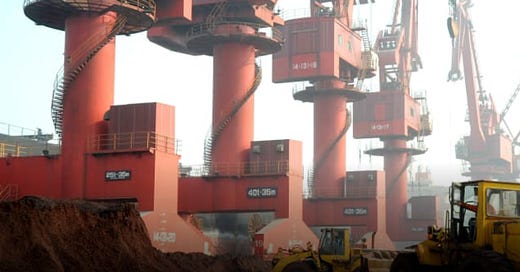S1.C59. TELL ME WHY - CHINA'S FACTORY
BY CLOUDY - Automakers’ overreliance on China’s rare earth supply exposed deep strategic flaws—turning a geopolitical move into a global manufacturing crisis with no quick fix.
In April 2024, China imposed a sudden export ban on heavy rare earth elements, triggering a wave of disruption across the global automotive industry. This move not only highlighted China’s overwhelming dominance in the rare earth supply chain but also exposed the vulnerability of global manufacturers who depend on these critical minerals to produce everything from combustion engines to electric vehicles.
Rare earth elements — a group of 17 chemically similar minerals — are vital to numerous industries, especially the automotive sector. They are embedded in essential car components such as catalytic converters, seat belts, steering systems, electric motors, and batteries. Gracelin Baskaran, director of the Critical Minerals Security Program at the Center for Strategic and International Studies, emphasized that it is impossible to manufacture a modern car without them.
These minerals are categorized based on their atomic weight into light, medium, and heavy rare earths. While light rare earths are more accessible, medium and heavy rare earths are significantly harder to obtain and process. China has monopolized both mining and — more importantly — the processing of these heavier elements. It controls 70% of the global rare earth mines and around 90% of global rare earth processing capacity, with a complete monopoly on processing heavy rare earths. The term “rare” refers less to their abundance in the earth’s crust and more to the complex, costly, and environmentally challenging process required to extract and separate them.
The abrupt nature of China’s export restriction on April 4 stunned automakers worldwide. There was no warning, and within weeks, the global supply chain was depleted. European carmakers were forced to halt factory operations, and major companies like Ford had to idle production of popular models such as the Explorer SUV. The disruption was not just a logistical issue — it was a strategic shock that underscored the fragility of the entire system.
Although temporary relief came in the form of limited permissions for select suppliers and a U.S.-China agreement to expedite magnet and rare earth shipments, the long-term reliability of these deals remains uncertain. Baskaran cautioned that U.S.-China trade tensions and escalating resource nationalism mean the volatility is far from over.
This crisis has spurred renewed urgency for countries and companies to find alternatives. Long-term strategies such as developing domestic processing capabilities, investing in rare earth recycling, and discovering new sources of these minerals are being explored. However, such efforts will take years to scale.
The rare earths shock is part of a broader pattern of supply chain disruptions that have increasingly defined the global manufacturing landscape. Dan Hearsch of AlixPartners warned that rare earths may just be the beginning. Tomorrow, it could be another overlooked yet indispensable resource that sparks a similar crisis.
Ultimately, the rare earth element embargo is a wake-up call. It exposes the risks of overreliance on a single supplier and underscores the urgent need for strategic resilience, diversification, and innovation within global supply chains — especially for industries as vital and interconnected as automotive manufacturing.
Here are 3 questions for you :
“What are our critical material dependencies, and what happens if we lose access to them overnight?”
This would have prompted supply chain risk mapping, identifying rare earths as a choke point.
Action: Develop alternate sources (e.g., Australia, the U.S.), stockpiles, or recycling pipelines before crisis hits.
“Are we treating geopolitical risk as a core supply chain variable or just a background concern?”
Many automakers treated rare earth access as “business as usual” despite growing global tensions.
Proactive risk modeling could have prioritized redundancy and political diversification.
“What investments now can protect us from future black swan shortages?”
Investing in rare earth innovation, processing facilities outside China, or magnet-free motor designs would’ve reduced reliance.
Some of these options take years—but the time to start was yesterday.
Provide the question# on your comment when you answer.
READ MORE SCORE MORE
PREVIOUS
S1.C5. TELL ME WHY - RADIOSHACK
·RadioShack, once a titan in the consumer electronics retail space, filed for Chapter 11 bankruptcy in February 2015, marking the end of an era for the 94-year-old brand. The company’s downfall was not the result of a single event but a cascade of operational failures, poor strategic decisions, and an inability to adapt to shifting market dynamics—partic…
NEXT
if you have difficulties accessing any of these documents to read, please feel free to revert to us
Here is a quick guide if you want to change the article into languages of your choice…. but you already know this






